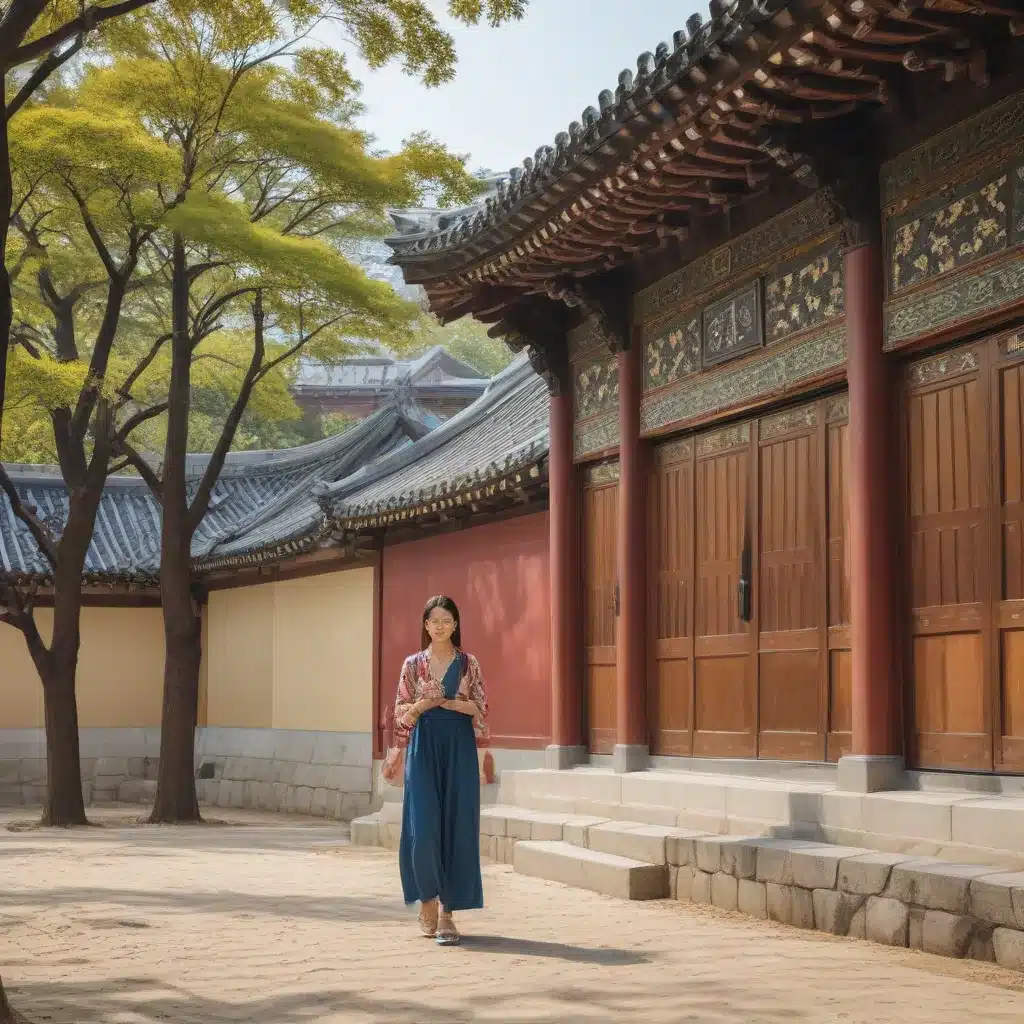
Stepping Back in Time: Exploring Seoul’s Royal Legacy
As I stroll through the serene gardens of Deoksugung Palace, I can’t help but feel a sense of wonder and reverence. This majestic landmark, nestled in the heart of bustling Seoul, South Korea, stands as a testament to the country’s rich history and cultural heritage.
Unveiling the Palace’s Captivating Past
Deoksugung Palace, also known as the “Castle of Virtuous Longevity,” has a captivating history that dates back to the late 14th century. According to TripAdvisor, the palace was initially built as a residence for a royal prince, but over the centuries, it has evolved to serve as a critical seat of power for various Korean dynasties.
The website of the Cultural Heritage Administration of Korea reveals that Deoksugung was the site of significant historical events, including the coronation of several Korean monarchs. It was also the location where King Gwanghaegun, one of the most controversial figures in Korean history, spent the final years of his reign.
Exploring the Palace’s Architectural Marvels
As I wander through the palace grounds, I’m struck by the captivating blend of traditional Korean architecture and Western influences. The Visit Seoul website notes that the palace features a unique architectural style, with buildings that combine classic Korean design elements with European-inspired features.
One particularly striking example is the Seokjojeon Hall, a grand structure that was commissioned by King Gojong in the late 19th century. This building, which serves as the main entrance to the palace, seamlessly blends Korean and Western aesthetics, with its ornate facade and towering columns.
Discovering the Palace’s Hidden Gems
As I delve deeper into the palace’s winding pathways, I uncover a wealth of hidden gems that showcase the ingenuity and craftsmanship of Korea’s artisans. From the delicate Changdeokgung Garden, with its serene ponds and meandering streams, to the impressive Hamnyeongjeon Hall, each corner of the palace holds a new surprise.
One of the most captivating features of Deoksugung is the Daehan Gate, a grand entryway that once served as the primary entrance to the palace. According to TripAdvisor, this gate is a stunning example of traditional Korean architecture, with its intricate carvings and ornate roofline.
Immersing in the Palace’s Rituals and Traditions
As I explore the palace, I’m struck by the sense of timelessness that permeates the air. The Cultural Heritage Administration of Korea’s website reveals that Deoksugung continues to host a variety of traditional ceremonies and cultural performances, allowing visitors to step back in time and witness the rich tapestry of Korean heritage.
One such event is the Changing of the Guard ceremony, which takes place several times a day. The Visit Seoul website describes this captivating ritual, where meticulously uniformed guards perform a series of ceremonial movements and drills, showcasing the precision and discipline that were hallmarks of the Korean royal court.
Discovering the Palace’s Romantic Charm
As I wander through the palace’s tranquil gardens, I can’t help but imagine the stories that these walls have witnessed over the centuries. The Visit Seoul website reveals that Deoksugung was the site of a poignant love story, where King Gojong and Queen Min, later known as Queen Empress Myeongseong, would often stroll hand-in-hand, seeking solace from the demands of royal life.
It’s easy to imagine the couple’s tender moments, as I gaze upon the delicate cherry blossoms that adorn the palace grounds. The romantic charm of Deoksugung is palpable, and it’s no wonder that the palace has become a beloved destination for couples and visitors alike.
Uncovering the Palace’s Secrets
As I continue my exploration, I stumble upon hidden passageways and secluded corners that offer a glimpse into the palace’s more private and mysterious aspects. According to TripAdvisor, the palace’s Jeonggwanheon Pavilion, with its intricate latticed windows and serene pond, was once a private retreat for the royal family, where they could escape the formality of court life.
I’m also intrigued by the stories of the palace’s underground tunnels, which were reportedly used as secret escape routes during times of political upheaval. The Cultural Heritage Administration of Korea’s website notes that these hidden passageways have become a source of fascination for historians and visitors alike, adding to the palace’s air of mystery and intrigue.
Connecting with the Palace’s Enduring Legacy
As my visit to Deoksugung Palace draws to a close, I can’t help but feel a deep sense of appreciation for the rich history and cultural legacy that this remarkable site represents. It’s a place that has borne witness to the triumphs and trials of Korea’s monarchs, and yet, it stands as a testament to the enduring strength and resilience of the Korean people.
I leave Deoksugung with a renewed sense of wonder and a deep desire to explore more of Seoul’s historic wonders. And who knows, perhaps on my next visit to the city, I’ll discover even more hidden gems and captivating stories that will transport me even further back in time.
If you’re planning a trip to Seoul, be sure to add Deoksugung Palace to your must-visit list. Trust me, it’s an experience that will stay with you long after you’ve left the palace grounds.

